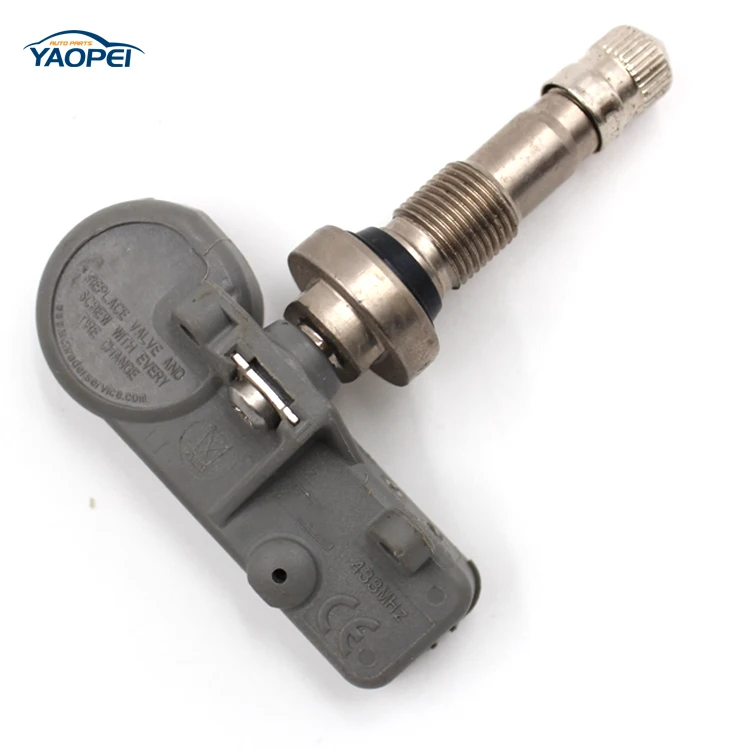Tire Pressure Monitor Systems have been around since the 1990s on older Corvettes and Cadillacs with run-flat tires, and has been mandatory on all passenger cars and light trucks since model year 2008.
TPMS systems are mostly maintenance-free – that is, until a sensor fails and has to be replaced. The little lithium ion button batteries inside TPMS sensors typically last 5 to 10 years, with 7 years being the average for many. Battery life depends on miles driven. The more miles a vehicle racks up every year, the more signals the TPMS sensors broadcast while the vehicle is being driven. The sensor only generates a signal at preset time intervals (30 to 60 seconds or longer) to conserve battery life. Because of this, the sensors in high annual mileage vehicles usually fail before those in vehicles that are driven fewer miles each year.
TPMS sensors can also fail at any time as a result of physical damage or corrosion. Some of the original equipment TPMS sensors on Asian makes have had a severe problem with corrosion of the aluminum stem. After a few years exposure to road salt, corrosion may cause the valve stem to suddenly break off.
The service life of a TPMS sensor battery is roughly equal to that of the tread life of the original equipment tires. A good set of tires should last 60,000 to 80,000 miles, so by the time the vehicle needs new tires it also needs new TPMS sensors – even if the original sensors are still functioning normally.
The reason why TPMS sensors should be replaced when a new set of tires is installed is because the sensors likely won’t last until the next tire replacement. They might go another year or two, or they might not. But it is highly unlikely they will last another 5 to 7 years.
A TPMS sensor also may need to be replaced if it is damaged while dismounting or mounting a tire on a rim. If a sensor is removed from a wheel temporarily for tire service, or installed in a different rim, and it is a clamp-on style sensor with a hex nut and grommets at the base, a new nut and grommets must be used to reduce the risk of air leaks. Service kits are available for this purpose that contain new grommets, hex nuts, valve cores and caps.
Service kits are available for this purpose that contain new grommets, hex nuts, valve cores and caps.
When TPMS was initially introduced by the vehicle manufacturers, they did their best to really complicate things for the aftermarket with a proliferation of different sensor designs and types. In recent years, aftermarket suppliers have overcome this issue with various “universal” sensors that fit a wide variety of applications. This greatly reduces the number of SKUs needed to cover the market, and it simplified replacement for installers.
Although some TPMS systems can self-learn the position of the individual wheel sensors, many have to be programmed with a special TPMS tool after sensors have been replaced so the TPMS control module will know which wheel sensor is which. This is essential on vehicles that actually display individual tire pressure readings on the instrument panel. On vehicles that only give a general low tire pressure warning (no individual tire pressure readings or positions), sensor locations usually don’t matter.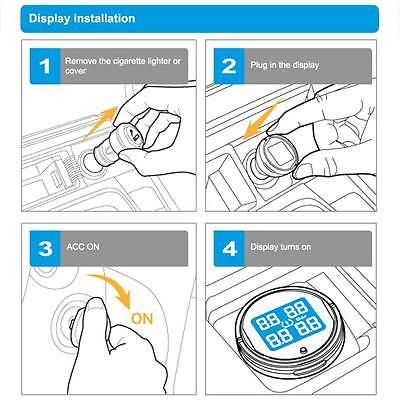 The driver will have to figure that out which tire is low by checking each tire with a pressure gauge.
The driver will have to figure that out which tire is low by checking each tire with a pressure gauge.
Snap-in TPMS sensors that have a rubber stem are as easy to replace as any conventional valve stem. No special tools are needed. But hex nut stems do have to be carefully tightened to specific value with an accurate inch-pound torque wrench or TPMS valve stem tool.
In this article:Tech Topics
When your Tire Pressure Monitoring System (TPMS) lights up, one or more of your tires might be under-inflated. Or your TPMS system itself might need service -- from a simple reset to new seals to a TPMS sensor replacement.
Your Midas technician can check your tire pressure, tell you why the light is on, and make sure your TPMS is working to alert you to any dangerous loss of tire pressure.
The TPMS light is a dashboard alert that lets you know when one or more of your tires is under-inflated. Depending on your vehicle, tire pressure is monitored either by your ABS system or by a battery-powered sensor mounted on each wheel or tire. Your Tire Pressure Monitoring System is an important safety feature because under-inflated tires pose an increased blowout risk. TPMS is also a cost-saving feature because low tire pressure shortens tire life. An under-inflated tire wears down prematurely at the edges.
Depending on your vehicle, tire pressure is monitored either by your ABS system or by a battery-powered sensor mounted on each wheel or tire. Your Tire Pressure Monitoring System is an important safety feature because under-inflated tires pose an increased blowout risk. TPMS is also a cost-saving feature because low tire pressure shortens tire life. An under-inflated tire wears down prematurely at the edges.
Different TPMS systems have different repair and service options. For instance, most TPMS sensors do not have removable batteries, so the entire sensor must be replaced when the battery is drained. Here are the TPMS service options at Midas:

A steady TPMS light usually means one or more of your tires is under-inflated. Depending on your vehicle, various pressure conditions may trigger a TPMS alert, such as a sudden change in pressure, or your tire pressure falling too low by a certain percentage. A blinking or flashing TPMS light usually indicates an issue with the TPMS system itself, such as a dead TPMS sensor battery. Check your vehicle manual to learn what triggers your particular TPMS light.
If you’ve added air to your tires and verified their inflation levels with a tire pressure gauge, there are three possible reasons for the TPMS light to stay on:

It is only safe to drive with the TPMS light on if you’re certain your tires are maintaining proper pressure (suggesting the light is on because of a TPMS system issue). It’s unsafe to drive on improperly inflated tires, so check your tires with a pressure gauge as soon as your TPMS light comes on. If your tires maintain correct pressure but the light still won’t go off, it’s time for diagnostic service on your TPMS. In this case it’s OK to drive in the short term, as long as you monitor your tire pressure carefully -- and remember that you may not be reliably alerted to dangerous changes in tire pressure.
A TPMS sensor is typically replaced when its battery runs out. Very few sensors come with removable batteries, so the lifespan of a TPMS sensor is usually equal to its battery life.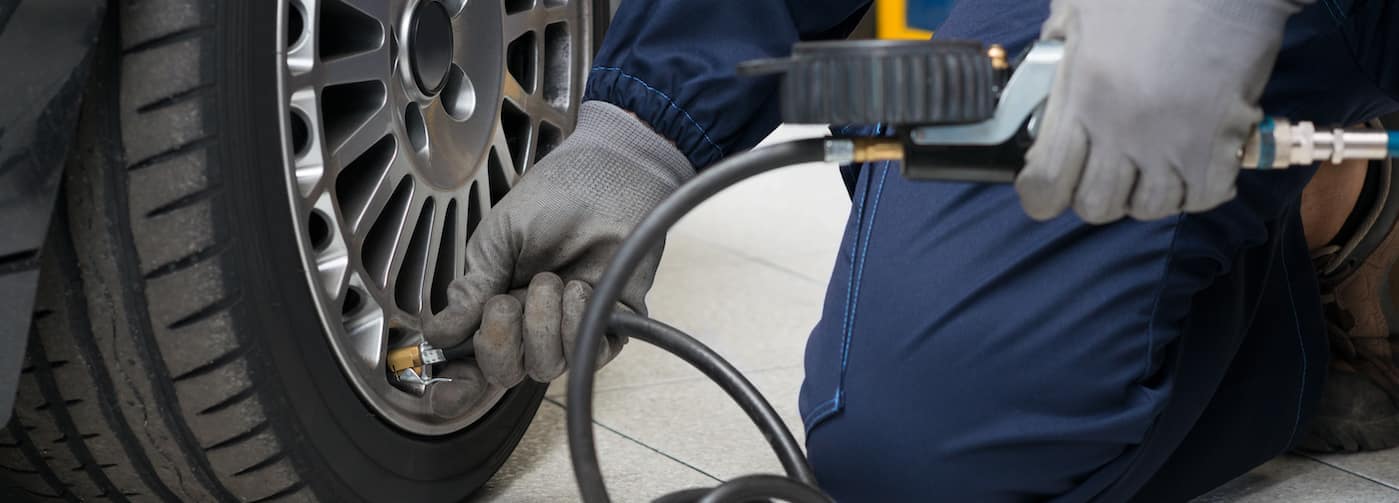
You don’t need to replace your TPMS sensors when buying new tires, but it’s often convenient to do so if the sensors are more than a few years old. Most TPMS sensor batteries last five to ten years, so older sensors may not last as long as your new tires. Many drivers prefer to avoid the hassle of replacing TPMS sensors mid-way through the tire lifecycle.
Midas recommends a TPMS Service Kit when replacing tires. This kit contains replacement parts for the sensor’s valve stem seals and nuts to ensure a perfect fit to your new tires.
Your local Midas technician can help you decide whether to replace TPMS sensors based on the life expectancy of your new tires, and we’ll be here to replace your sensors when the time is right.
You should always reset your TPMS after changing or rotating tires, or installing new sensors. Some sensor manufacturers recommend resetting it even after adding air to your tires. Resetting the TPMS is often described as retraining the main TPMS system by teaching the system to recognize the sensors in their new positions. Depending on your vehicle, the TPMS reset procedure consists of sequence of ignition and pedal movements, or changing a setting in your dashboard menu, or using a TPMS Reset Tool.
Resetting the TPMS is often described as retraining the main TPMS system by teaching the system to recognize the sensors in their new positions. Depending on your vehicle, the TPMS reset procedure consists of sequence of ignition and pedal movements, or changing a setting in your dashboard menu, or using a TPMS Reset Tool.
Check your vehicle manual or ask your local Midas technician how to reset your TPMS after tire service.
TPMS equipment is a useful option that is equipped with modern cars. TPMS monitors the tire pressure and signals the change in the parameter to the on-board computer.
If such equipment is installed on your car, this is not an obstacle to fast and high-quality tire fitting. But it is difficult to cope with this task on your own, since the use of specialized equipment is required. To the question of how to tire with pressure sensors, the answer is simple - visit Tuningberg LLC, where experienced craftsmen will perform the work in the shortest possible time. Our mechanics visually determine the presence of control equipment, but it is safer to warn about the gadget in advance, since the sensors are very fragile and prone to breakage.
To the question of how to tire with pressure sensors, the answer is simple - visit Tuningberg LLC, where experienced craftsmen will perform the work in the shortest possible time. Our mechanics visually determine the presence of control equipment, but it is safer to warn about the gadget in advance, since the sensors are very fragile and prone to breakage.
Control and measuring devices are made of two types: external and internal.
When replacing wheels, increased accuracy is required, which will be provided by our masters.
The installed pressure sensor is not a serious obstacle, but requires precautions when mounting or dismantling the rubber.
During the process, it is unacceptable to apply external influence to the device. From the description it is clear that it is impossible to carry out work without having the skills and without the use of specialized equipment.
If your car is equipped with such equipment, be sure to contact a car service to reinstall seasonal tires. The question arises whether it is possible to install devices on both sets of wheels and replace them yourself. No, it causes difficulties.
After installing the wheels, the computer does not perceive the signal, and this is normal, since the cars standing nearby will transmit information that does not correspond to reality, therefore, recoding of the control equipment is required. This operation is carried out quickly:
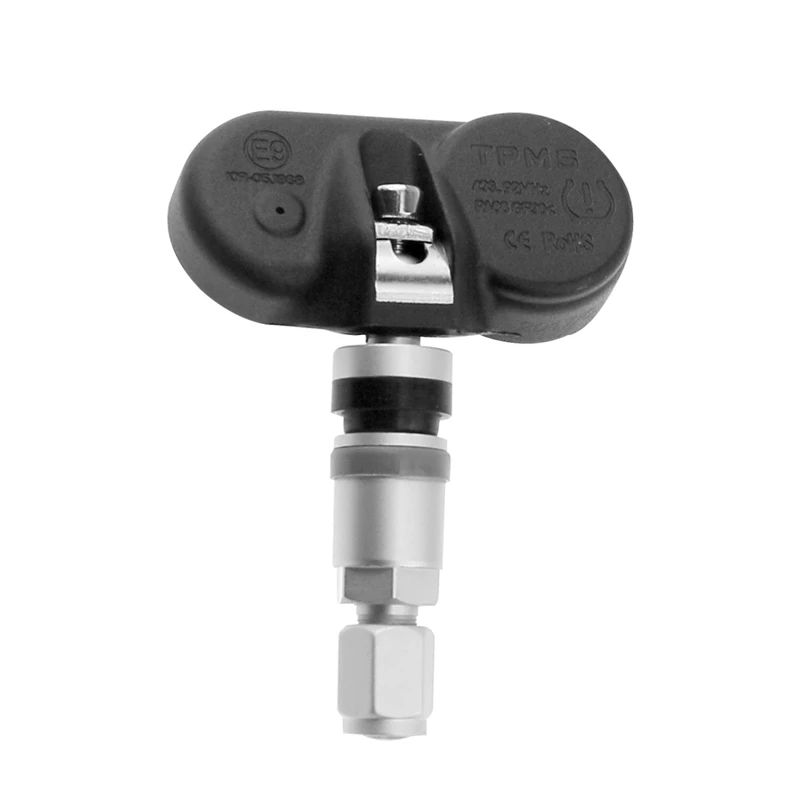
After that, the circuit returns to normal and functions properly.
Our company employs qualified mechanics with extensive experience in tire fitting of wheels equipped with pressure sensors. They use modern high-tech equipment and follow the recommended work steps exactly. As a result, our customers are protected from marriage and breakdowns.
Independent work can lead to malfunctions of complex equipment, the elimination of which will require time and additional costs.
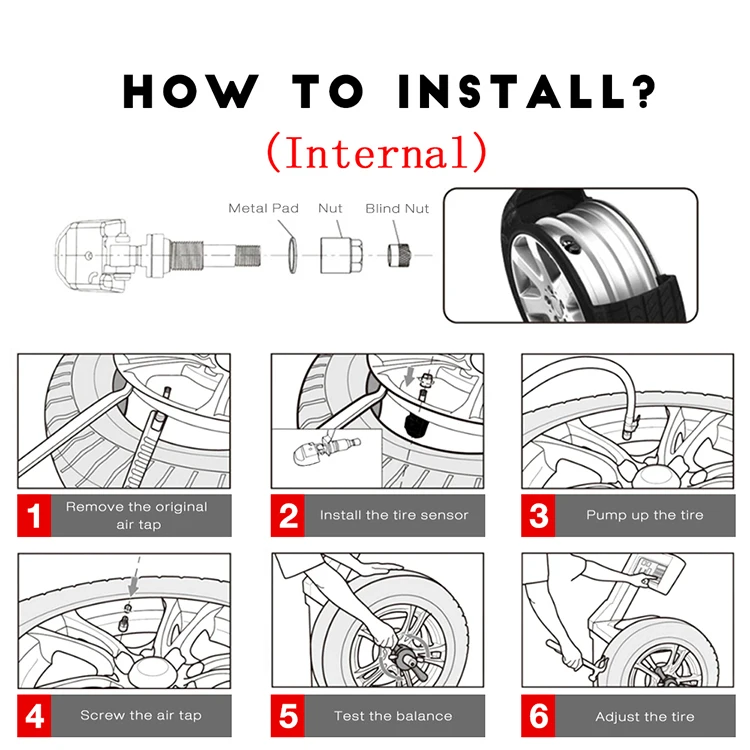 We have transparent and open pricing, we do not impose unnecessary repairs.
We have transparent and open pricing, we do not impose unnecessary repairs. Call and come. The employees of Tuningberg Ltd. are ready to cope with the most difficult problem. Our company is a reliable and responsible partner.
array ( [ID] => 59[~ID] => 59 [IBLOCK_ID] => 6 [~IBLOCK_ID] => 6 [NAME] => How to tire change tires with pressure sensors [~NAME] => How to tire change tires with pressure sensors [PREVIEW_TEXT] =>
Installed tire pressure sensors can complicate self-mounting tires, as the whole procedure for changing tires will change a little. In this article, you will learn how professionals carry out tire fitting of wheels with pressure sensors and what nuances you should pay attention to. And also why it is better to turn to professionals, and not try to do it yourself.
[~PREVIEW_TEXT] =>
Installed tire pressure sensors can complicate self-mounting tires, as the whole procedure for changing tires will change a little. In this article, you will learn how professionals carry out tire fitting of wheels with pressure sensors and what nuances you should pay attention to. And also why it is better to turn to professionals, and not try to do it yourself.
In this article, you will learn how professionals carry out tire fitting of wheels with pressure sensors and what nuances you should pay attention to. And also why it is better to turn to professionals, and not try to do it yourself.
[PREVIEW_PICTURE] => 604 [~PREVIEW_PICTURE] => 604 [DATE_CREATE] => 19.10.2020 18:50:49 [~DATE_CREATE] => 10/19/2020 18:50:49 [DATE_ACTIVE_FROM] => 01/08/2021 19:37:00 [~DATE_ACTIVE_FROM] => 01/08/2021 19:37:00 [PREVIEW_TEXT_TYPE] => html [~PREVIEW_TEXT_TYPE] => html )
from 2250₽
from 3200₽
Our company is specialized in tire pressure sensors . Here you can buy TPMS sensors for any car.
Both original and universal analogues of sensors are available, which with 99% probability will fit your car and will work as well as an original spare part.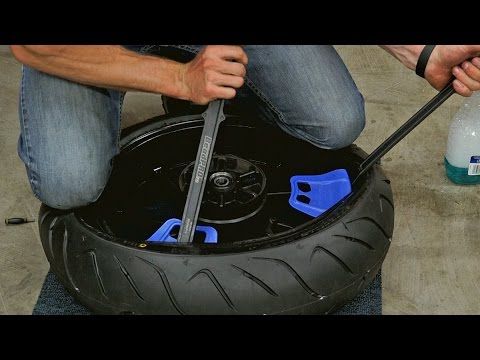
In our shop, the cost of tire pressure sensors is much cheaper than original TPMS kits.
Sensor Catalog
+7 (495) 790-11-24
Most modern cars have built-in TPMS sensors, but there are some that don't. If your vehicle does not have a built-in tire pressure monitoring system (TPMS) sensor, you have nothing to worry about. It is still possible to buy a TPMS sensor to keep your car's tires from being compromised while driving. These are systems that are designed to detect low tire pressure in your vehicle and alert you immediately. Thus, they guarantee your safety on the roads.
Not only will you save your life, but you will also save on towing and repair costs. Finding a quality TPMS sensor can be a daunting task, especially if you are buying one for the first time. You need to make sure you choose one that is compatible with your vehicle's wheels and ECU. In this article, we have reviewed 8 of the best TPMS sensors available on the market. Here's a quick guide before continuing.
Here's a quick guide before continuing.
Manufacturer: Autel
We start this review with the Autel TPMS sensor, which comes in a set of four. It will work just as well as the OEM and it's possible at a minimal cost. In addition to the affordable price, it is very easy to use. It also promises to last a long time, which means you'll save on frequent repairs to your car.
Programming and setting up the device is another thing you will appreciate about this device. It is powered by a battery with a 5 year lifespan. You also need to have enough confidence to buy as the manufacturer offers a 2 year warranty. The price of this essential is relatively high, but you will definitely get value for money.
Sensor Features:
- This is a system that is very easy to install and program.
- Comes with a 2 year manufacturer's warranty.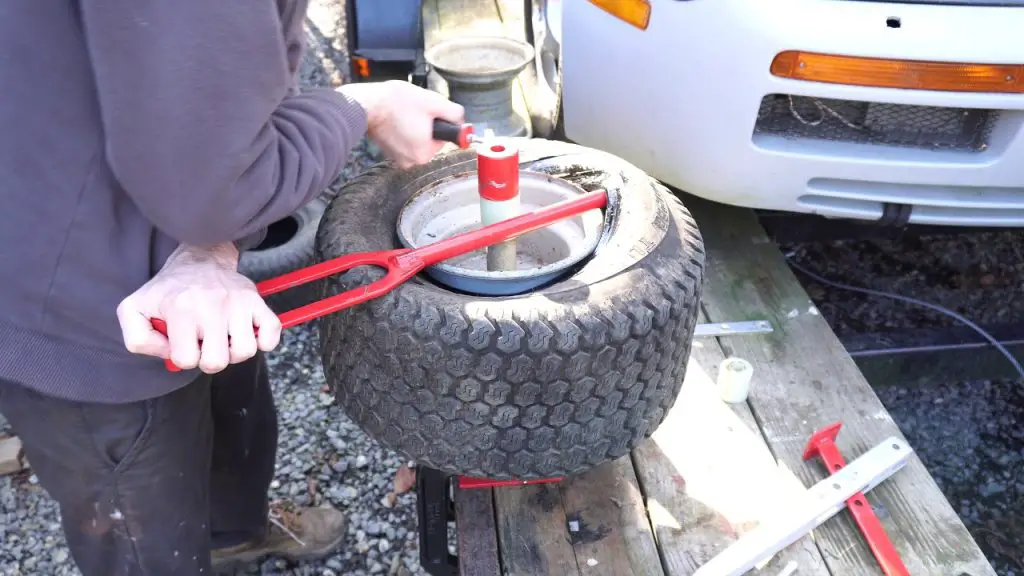
– Rugged and durable construction with 5 years of battery life.
- This is an economical and easy to use system for cars.
Launch
Tire Pressure SensorsManufacturer: Launch
This is a set of four sensors designed to monitor your vehicle's tires. The device comes pre-programmed, don't forget that its installation is very simple. The battery of this device is of good quality, it will last for 6 years. In addition to monitoring car tire inflation, the sensor also sends temperature information like factory sensors.
This is a device that works so well that it doesn't take long to install. It is also pre-programmed which means it will be ready to use right out of the box. The manufacturer provides a 2-year warranty on this product to cover any manufacturing defects. Again, there is a money back guarantee in case of dissatisfaction.
Sensor Features:
– Battery life 5 to 6 years.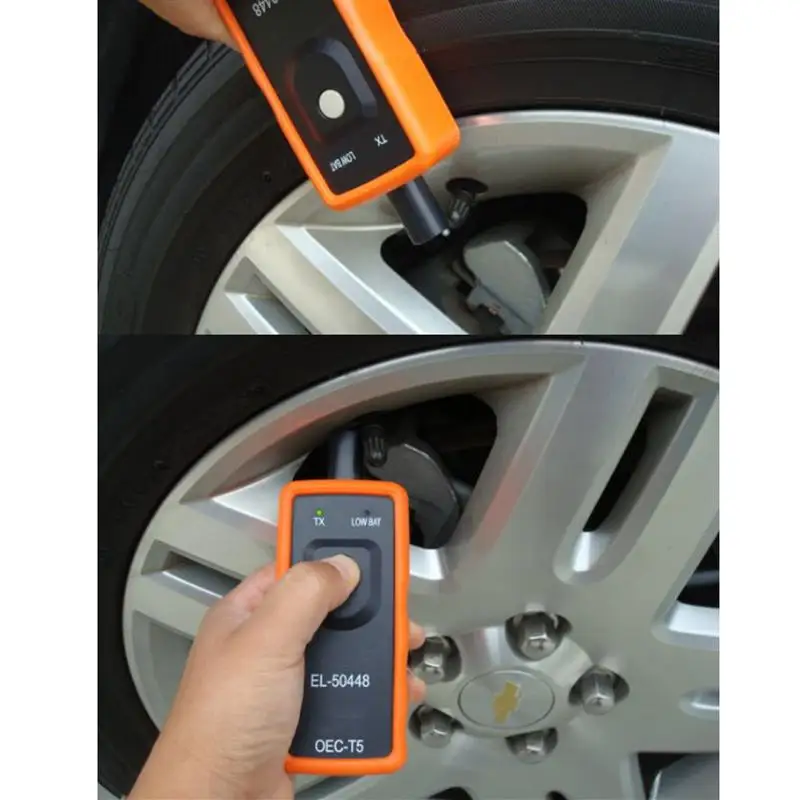
- Easy installation and reset of iDrive.
- 80% customer satisfaction guarantee.
- TPMS comes with a 2 year warranty.
Manufacturer: ORO-Tek
This sensor works in the same way as the original equipment sensor. You will never have to worry about your limited budget as this one comes at a very affordable price. Another unique feature of this sensor is that it does not require programming. What you will need to do is use the OEM relearn procedure.
Its two-piece stem design makes maintenance easy. This is because it becomes very easy to replace the stem regardless of the electronics. Four sensors are required for best performance. Oro-Tek is a brand that offers unparalleled products and the educational resources you need to deliver a high level of customer satisfaction.
Sensor Features:
- Designed to match the original equipment sensor.
- This TPMS sensor does not require programming.
- 35 degree adjustable stem.
- Uses the OEM relearn option.
Manufacturer: Schrader
On average, there are 59 million vehicles in Russia equipped with TPMS sensors. Approximately 19 million vehicles enter the market every year, increasing the demand for these sensors. You need to purchase a sensor that does not use dead batteries or electronics as these can compromise your safety. To this end, Schrader offers direct mount TPMS sensors.
This is a brand that has managed to integrate more than 200 million sensors into the world's automotive platforms since the launch of TPMS in 1997. You will appreciate the universal compatibility of this sensor as it is used in most car models. Since this is a sensor from a well-known brand at an affordable price, you have every reason to buy.
Sensor Features:
is the world leader in TPMS design and technology.
- Patented Schrader technology built into every OEM sensor.
- More than 200 million sensors are in operation worldwide.
- Offers a direct OEM sensor replacement.
Manufacturer: VDO
If you are looking for a sensor that will not hinder your work while still providing maximum coverage, this is a very good choice. It is not only versatile, but also reliable for any trip. The gauge has a strong clamping rod that helps expand your vehicle's wheel armature. Since you are made by a famous German brand, you will have every reason to buy this system.
This sensor comes pre-programmed and designed to follow the re-learning procedures for all vehicles. You will also have a very easy time when it comes to installation. REDI-Sensor is going to replace many original sensors, including latching sensors. The best thing about this sensor is that it comes at a very affordable price despite its outstanding performance.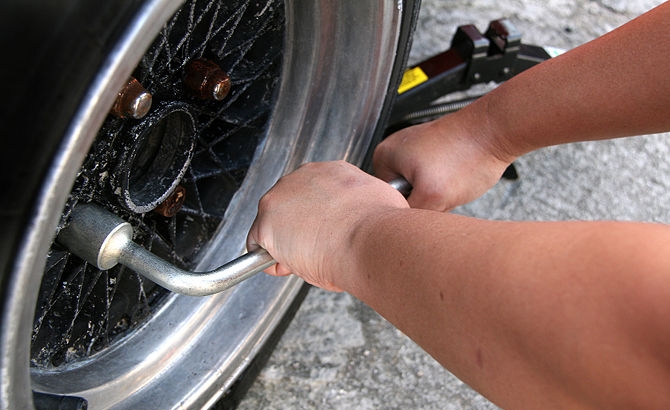
Sensor features:
- Includes all parts for easy installation.
- Robust swivel stem design with clamp.
- This sensor is approved by the original manufacturer.
- Sensor is pre-programmed to perform OE relearn procedures.
Manufacturer: VDO
In fifth place, according to our research, is another sensor from a well-known brand. When buying, you must be sure of yourself, because this sensor has a great track record. It comes in a set of two and comes with installation instructions to ensure a hassle-free installation. You will also appreciate the fact that no programming is required for this sensor.
In addition to being made by renowned manufacturers, this sensor works flawlessly just like the original equipment. The price for it is relatively affordable so that everyone can afford it, regardless of their budget.
Sensor Features:
- Sensors are supplied as a set of two.
- No programming required.
- Works just like the original equipment.
- Comes with installation instructions to ensure easy installation.
Manufacturer: Denso
If you want to be sure that your safety on the road will not be compromised, this is the sensor you need. The advantage of this device is that it is ideal for most car models. It is powered by polymer batteries that have been proven to last for a very long time. You will love installing this device in your car.
You have nothing to worry about even if you are shopping on a very limited budget. This is because this device comes at a very affordable price to ensure it fits all budgets. The fact that it comes from well-known manufacturers gives you the confidence to buy.
Sensor Features:
- Clamp Mount Design.
- Powered by a lithium polymer battery.
- This is a great OEM replacement.
- Ideal for most car models.
Manufacturer: ACDelco
Finally, we have the ACDelco TPMS sensor, which is battery operated. It will help you check your car's tire pressure and alert you when it's 25% below the recommended level. Using radio frequency, this sensor will flawlessly send pressure data to the on-board computer in the vehicle. The battery is good because it will last you up to 8 years.
However, you should know that this unit will work well for General Motors vehicles. Therefore, it is not recommended for some other manufacturers. However, this sensor works flawlessly and is easy to install as advertised. Thus, if you want to stay safe on the road with the right level of tire inflation, this is the one you should choose.
Sensor Features:
- Offers quality, reliability and durability.
- Increases vehicle safety.
- Batteries last up to ten years.
- Designed for flawless communication with the GM TPMS module.
- Ease of use: As with any tool you buy, it's good to pick one that is easy to use. You need to get a TPMS sensor that will serve you, not you. If you find yourself always consulting the Internet on how to use the sensor, you can be sure that this will give you difficulties.
- Reliability: It is always recommended to choose TPMS sensors from reputable brands. This ensures that you can get a timely response if you get stuck somewhere. You also need to check if the manufacturer has given a warranty for the tool you are going to purchase. This inspires confidence that the instrument is of good quality.
Maintaining ideal tire pressure is important for every driver.